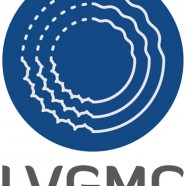Interview with Ms Daiga Pipira, Head of Geology Division at the Latvian Environment, Geology and Meteorology Centre
What is the basic role of the Latvian Environment, Geology and Meteorology Centre in Latvia? What are the main research areas?
State Ltd. “Latvian Environment, Geology and Meteorology Center” (LEGMC) is the largest institution in Latvia engaged in the collection and processing of geological information. However, the main areas of research at LEGMC also include meteorological and hydrological observations and forecasting, air quality monitoring, chemicals and hazardous waste management. For this work LEGMC employs 260 lead qualification specialists.
LEGMC Information Analysis Department has several branches: Division of Geology, Division of Inland Waters (hydrology and hydrogeology), Chemicals and Hazardous Waste, and Air and Climate Division.
The main activities in the field of geology can be divided into three basic groups: 1) accomplishment of State delegated assignments, 2) commercial side which includes preparation of geological information upon request of other institutions and private sector and 3) participating into national and international projects of different scale.
The main tasks of LEGMC in the area of geology are following:
- Approval of mineral reserves according to the legislation;
- Preparation of the annual balance of mineral reserves, collection and storage of geological information;
- Preparation and provision of geological and geospatial information for the needs of the state, society and land users;
- Investigations of quality of subsoil, geological and geoecological investigations of different hazards to the environment and population;
- Preparation and evaluation of information regarding mineral deposits occurring in subsoil;
- Seismic monitoring.
Collection and storage of geological information is the main task of LEGMC according to Law on Subsoil. Almost 30,000 thousand reports as well as maps and field books are stored in the State Geological Fund: results of geological mapping, results of geological prospecting, information on mineral deposits and mineral resources, results of geology investigations and engineering, geoecological investigations. This information gets processed and verified actively by geologists of LEGMC for the needs of the State, land users or projects.
Over the last 50 years a significant number of drilling holes as well as samples and thin sections were prepared by geologists, and all of them are available for use even today. There are nearly 500 drill-cores stored in 13 000 boxes of the Core Storage. Geologists of LEGMC prepare information of available drill-core intervals of crystalline basement, ancient weathering crusts as well as bedrocks requested by researchers, universities, private sector and foreign investors.
The Latvian Presidency of the European Council ended the 30th How this opportunity to steer EU policy agenda influenced the Latvian Environment, Geology and Meteorology Centre?
One of the three main priorities of the Latvian Presidency was the concept of Digital Europe. At the moment, the digitalization of the State Geology Fund and the implementation of the INSPIRE Directive (Infrastructure for Spatial Information in Europe) are the biggest challenges of LEGMC related to the geology field.
All the geology specialists have got appropriate skills for geospatial data processing, data analysis and evaluation of historical and incoming geological information taking part into projects. These projects are very multiform like geospatial summarization and data processing of all the peat deposits in national scale or CO2 Capture and Storage Response to Climate Change of the European Commission Framework Programme. Right now also the 2nd stage of EMODNET-Geology project is in collaboration with several national geological surveys.


